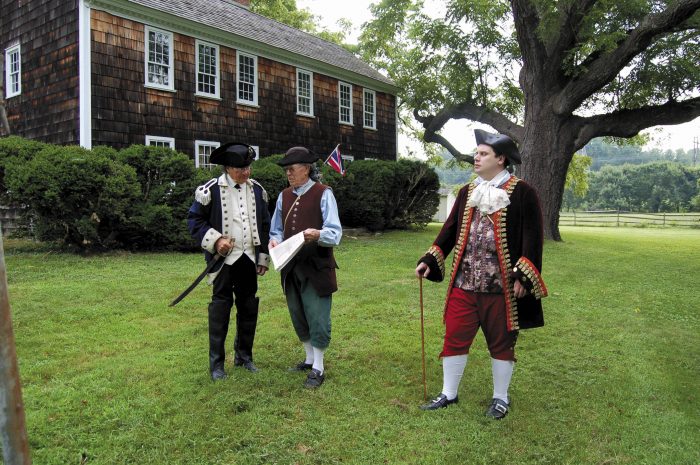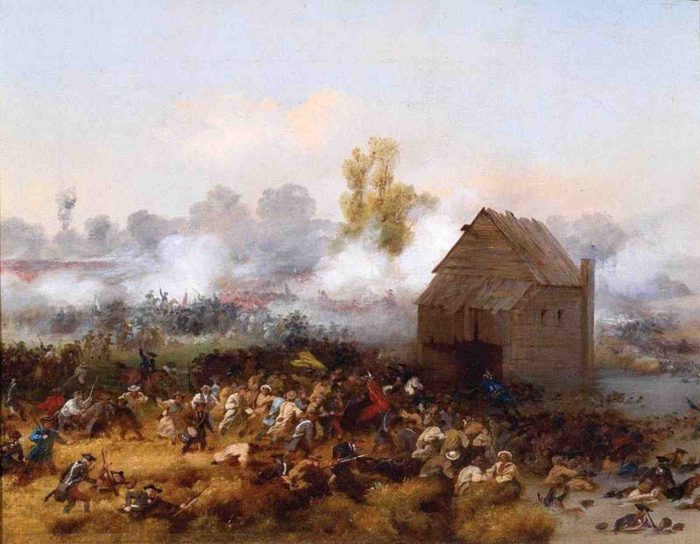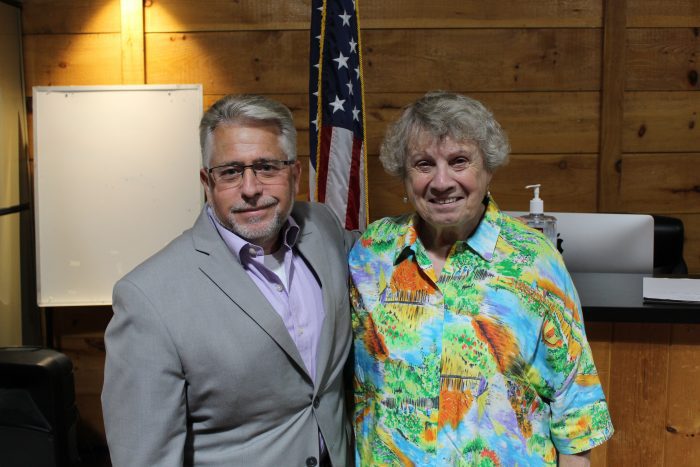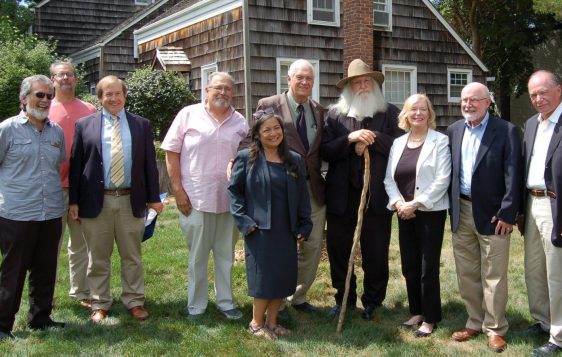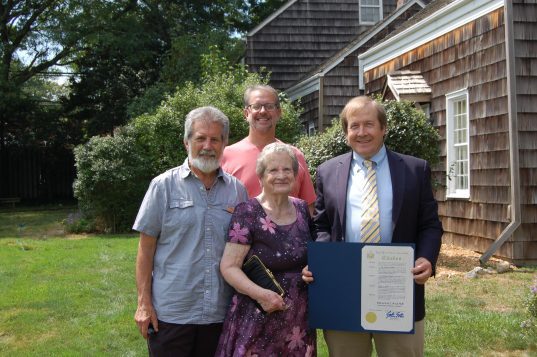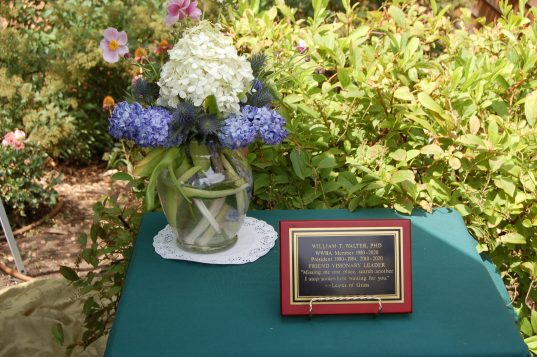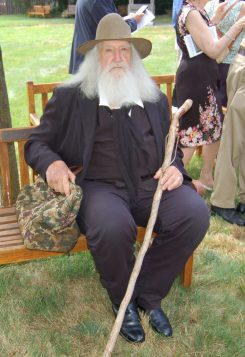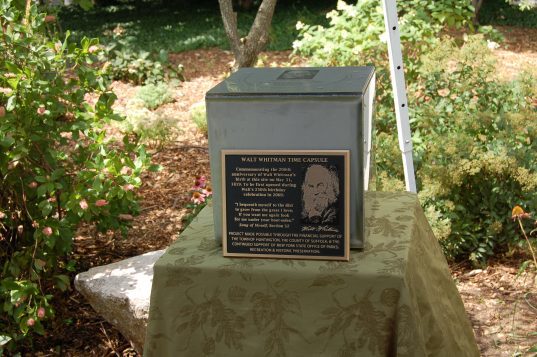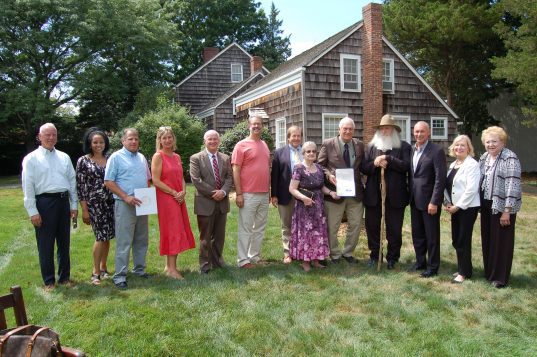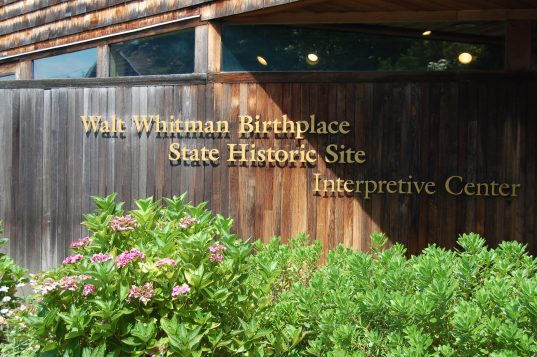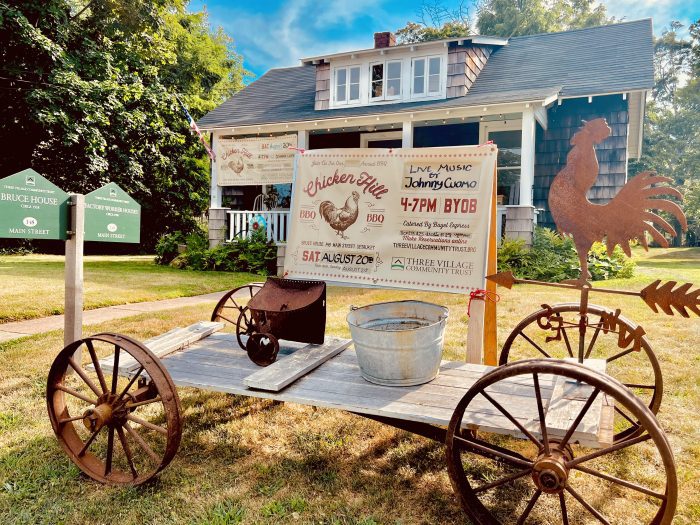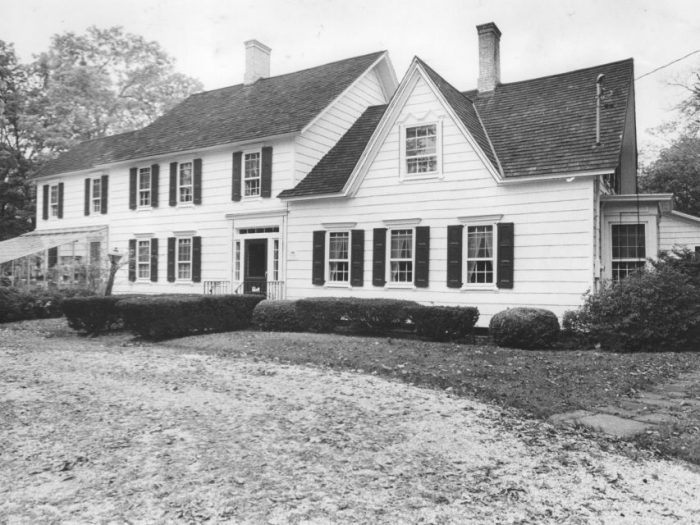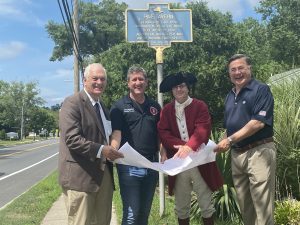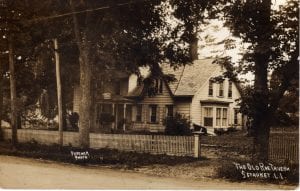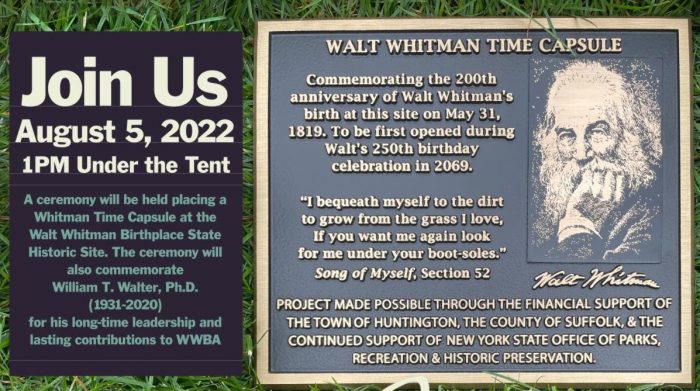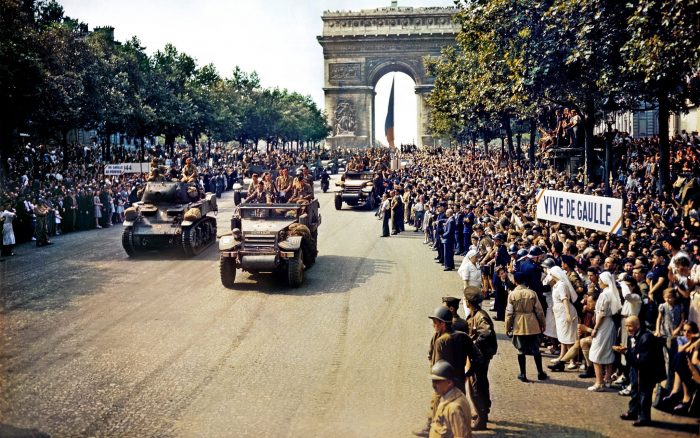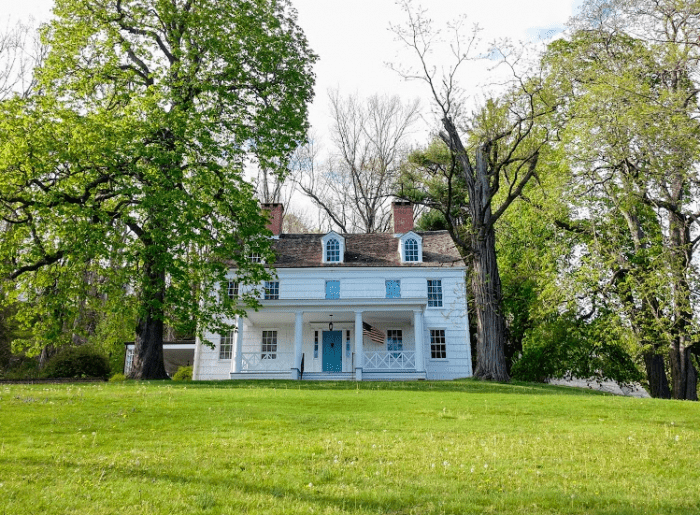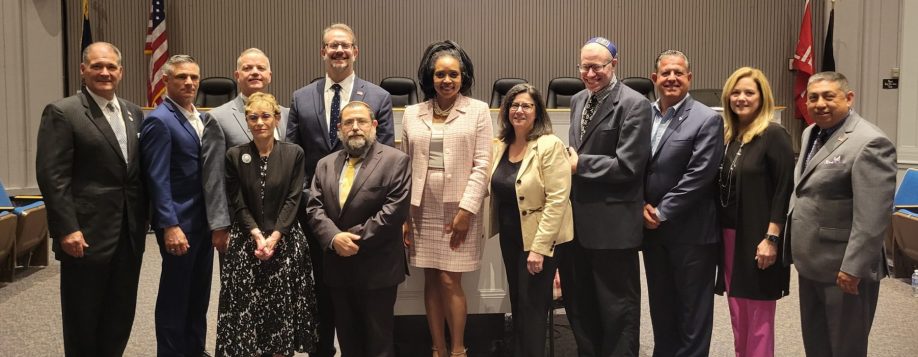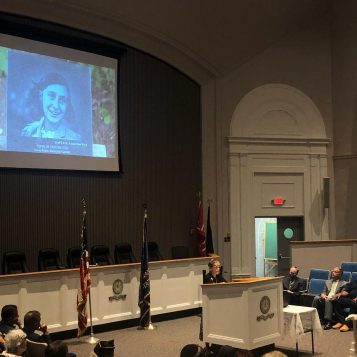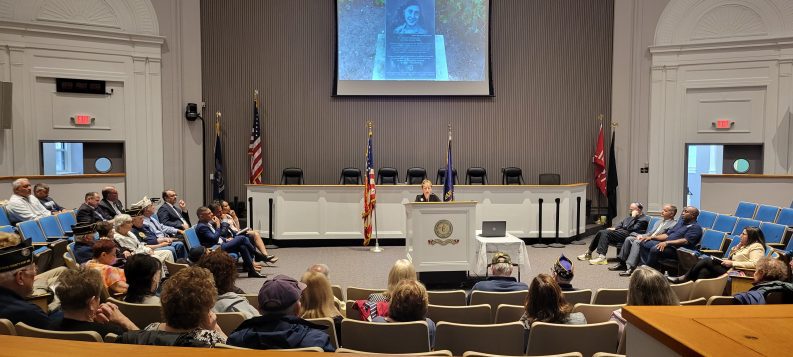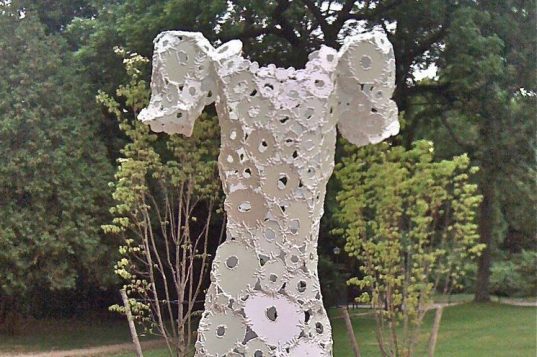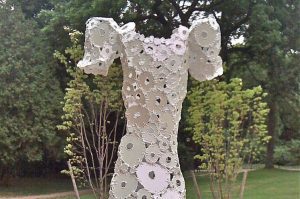By Heidi Sutton
Mark your calendars! Culper Spy Day returns on Saturday, Sept. 10 from 10 a.m. to 5 p.m. (rain date is Sept. 11). Presented by the Three Village Historical Society (TVHS) and Tri-Spy Tours in collaboration with more than 30 local historical and cultural organizations, the day will feature activities related to the Culper Spy Ring which was founded by Benjamin Tallmadge, George Washington’s chief intelligence officer during the Revolutionary War.
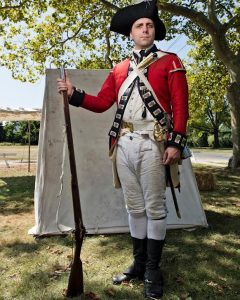
Now in its 8th year, the annual event is the brainchild of Margo Arceri, who first heard about Washington’s Setauket spies (including her favorite spy Anna Smith Strong) from her Strong’s Neck neighbor and local historian, Kate W. Strong, in the early 1970s.
“My love of history grew from there,” Arceri explained. “Everywhere you turn in the Three Villages you are looking at an artifact, and as the historical society believes, the community is our museum and I would really love to put that on the forefront of people’s minds.”
Participants will have the opportunity to visit 10 locations in Setauket, Stony Brook and Port Jefferson (see list on right) to learn about Long Island’s brave Patriot spy ring through historic church, home and museum tours, spy stories, colonial cooking demonstrations, military encampments, historic letters, musical performances, children activities and more. Admission to all locations, with the exception of the Sherwood-Jayne House tour and the Spies! exhibit tour at the TVHS, is free.
“Culper Spy Day is an educational and fun day of adventure for the whole family, designed to honor and commemorate the ordinary men, women and children that risked their lives day to day to fight for what they believed in and in turn, helped win the American Revolution,” said Mari Irizarry, Director at the TVHS.
“Visitors will learn stories of how Patriots outwitted the British to win the American Revolution. They’ll also learn what life was like on Long Island during the 18th century — what they ate, what they wore, what kind of jobs they had, etc. Prepare yourself to hear the true story of sacrifice that many citizens of Setauket undertook on behalf of their new nation,” said Irizarry.
One of the highlights this year is the Revolutionary War encampment in the field next to the TVHS with the Huntington Militia and the 23rd Regiment of Foot (Royal Welch Fusiliers in America). After a reading of Redcoats and Petticoats by Anna Smith Strong at 12:30 p.m., children will be invited to join the 23rd Regiment in a march around the encampment at 1 p.m. Sample some colonial cooking, an authentic recipe of Mary Floyd Tallmadge, courtesy of Stirring Up History‘s Diane Schwindt, resident historic cook at the Ketcham Inn in Center Moriches, on the grounds as well.
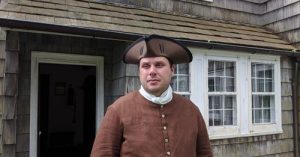
If you don’t have time to visit all the locations, Arceri recommends the Caroline Church of Brookhaven’s cemetery and history center which “is such a treat for visitors to explore and learn about” and Arceri and Irizarry both recommend the tour of the Sherwood-Jayne House with Big Bill the Tory.
Rarely open to visitors, “it is one of the best examples of colonial living and the house is in pristine condition. It’s also one of the few times guests will get to hear ‘the other side,'” said Irizarry. “Additionally, we’re so excited that the Drowned Meadow Cottage Museum chose Culper Spy Day as their grand reopening day.”
“I hope that we have new visitors to ‘Culper Country,'” said Arceri. “Setauket has really become a tourist destination and Culper Spy Day is certainly a highlight for these visitors as they are able to see many of the sites and visit with many of the organizations that make up our Revolutionary story.”
The 8th annual Culper Spy Day is made possible by the generous support of Heritage Spy Ring Golf Club with additional sponsorship provided by the Three Village Chamber of Commerce. For more information, call 631-751-3730 or visit www.culperspyday.com.
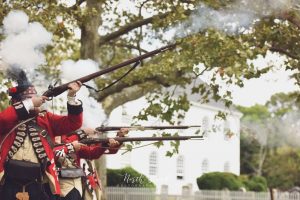
Participating locations for Culper Spy Day:
THREE VILLAGE HISTORICAL SOCIETY, 93 North Country Road, Setauket. Located in the circa 1800 Bayles-Swezey House. Here you can take part in outdoor events from 10 a.m. to 4 p.m. including “building” a timber frame house with Abraham Woodhull; children’s story hour; colonial crafts with the Daughters of the American Revolution – Anna Smith Strong Chapter; an invisible ink demonstration; printmaking with Gallery North; Culper Spy-themed authors and book signings; Anna Smith Stron’s famed clothesline, a colonial cooking demonstration; 23rd Regiment of Foot (Royal Welch Fusiliers in America) and Huntington Militia encampment; a potato sack race; augmented reality demonstrations; mobile exhibits, and much more. Docent led tours of the Spies! exhibit will be held every 30 mintues at $10 per person. 631-751-3730.
SETAUKET NEIGHBORHOOD HOUSE, 95 Main St., Setauket. The original part of the house, where the central chimney is located, was built in the early 1700s. In 1820 it was moved to its present location from its original site on Setauket (Conscience) Bay by Dr. John Elderkin. The building has served as an inn, and has housed a general store, post office, bank and a Franklin Library. Docents will give tours of the historic home from 10 a.m. to 4 p.m. 631-51-6208.
PATRIOTS ROCK HISTORIC SITE, Main Street, Setauket (across from the Setauket Post Office). This glacial erratic boulder is said to be the location of the Battle of Setauket on Aug. 22, 1777. Stop here between 10 a.m. and 2 p.m. to meet representatives from the Three Village Community Trust who will discuss the importance of Patriots Rock and its local and environmental history. 631-689-0225.
CAROLINE CHURCH AND CEMETERY, 1 Dyke Road, Setauket. Built in 1729, this timber frame building has maintained its Colonial appearance. Now an Episcopal church, during the Revolutionary War the Caroline Church was Anglican and a Colonial extension of the Church of England. The graveyard contains the remains of six Patriot soldiers as well as soldiers from World War I and II. The inside of the church will be open for guided tours from 10 a.m. to 3:45 p.m. from the vestibule and tour the cemetery your leisure with a docent present for questions. 631-941-4245.
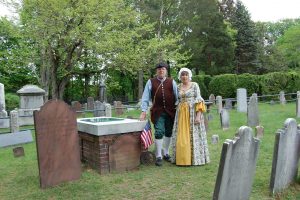
SETAUKET PRESBYTERIAN CHURCH AND CEMETERY, 5 Caroline Ave., Setauket. The previous church (1714–1811) was a part of British fortifications during 1777. The fort was under the command of Loyalist commander Col. Richard Hewlett. The present building dates from 1812. Come tour the interior of the church from 11 a.m. and 2 p.m. and then tour the cemetery with the grave of Abraham Woodhull of Washington’s spy ring at your leisure. 631-941-4271.
EMMA S. CLARK MEMORIAL LIBRARY, 120 Main St., Setauket. The library (circa 1892) will present a concert featuring the trio Rose Tree, a traditional folk group which includes musicians Larry Moser, Mary Nagin and Maria Fairchild, from 11 a.m. to 1 p.m. on the Library lawn. They will be performing 18th century songs and tunes from America, Ireland, England and Scotland. View Revolutionary War soldiers’ equipment in the Library’s lobby. Kids can enjoy a craft from noon to 3 p.m. and check out related materials at the information tent adjacent to the front entrance. 631-941-4080.
SETAUKET ELEMENTARY SCHOOL AUDITORIUM, 134 Main St., Setauket. Completed in 1951, the auditorium contains the murals of artist Vance Locke. A gift of Ward and Dorothy Melville to the community, the murals tell the stories of Setauket/Brookhaven history. The auditorium will be open to the public for self-guided tours from 10 a.m. to 1 p.m. 631-730-4600.
SHERWOOD-JAYNE HOUSE, 55 Old Post Road, East Setauket. Originally built around 1730 as a lean-to saltbox dwelling, the house and farm were maintained as an operational farmstead for over 150 years by members of the Jayne family. Visit with Big Bill the Tory aka William Jayne III, who will explain the noble intentions and virtuosities of King George III and tells you the TRUTH about Washington’s pesky band of renegade spies! Tours run continuously from 11 a.m. to 3 p.m. $5 per person, children under 5 free. Pre-registration is recommended at www.preservationlongisland.org. 631-692-4664.
THE LONG ISLAND MUSEUM, 1200 Route 25A, Stony Brook. The museum is a Smithsonian Affiliate with permanent and changing exhibitions on American history and art, along with the finest collection of horse-drawn carriages in the country, some of which belonged to Revolutionary War heroes. Visit the History Museum between noon and 5 p.m. to view the newly uncovered Culper Spy Ring letter by Benjamin Tallmadge to Robert Townsend. Tour the museum’s galleries and grounds for free. 631-751-0066.
DROWNED MEADOW COTTAGE MUSEUM, corner of West Broadway and Barnum Avenue, Port Jefferson. The Revolutionary War-era Roe House was originally constructed circa 1755 and Phillips Roe, a member of the Culper Spy Ring along with his brother Nathaniel and cousin Austin, was known to have lived there. Visit the cottage between 11 a.m. and 4 p.m. for their grand reopening and enjoy a new exhibit, Privateers: Pirates with Permission, tours, privateers re-enacting the plundering of the Roe family and colonial-themed storytelling for children.
* Please note: Public restrooms are located in the Setauket Neighborhood House and Emma S. Clark Memorial Library.

